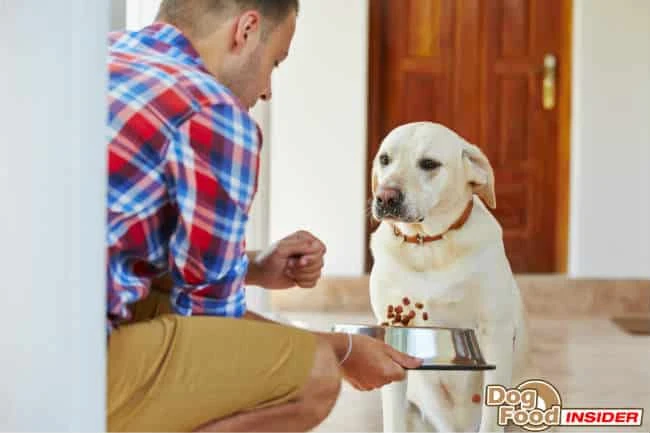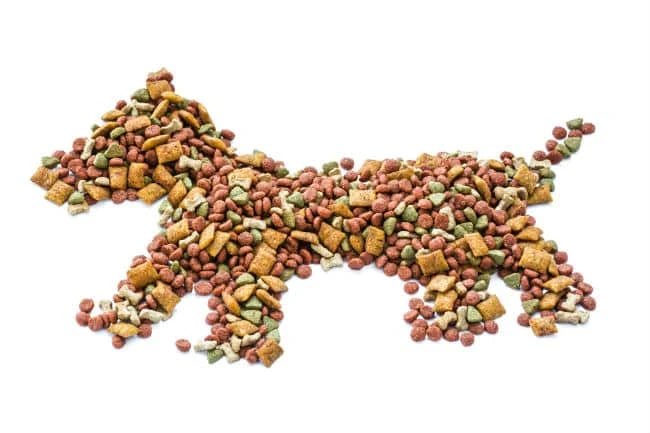Dog Food Allergies, Allergy Free Dog Food

Dog food allergies account for a massive 10% of all allergies seen in dogs and they are so common that they are all most as common as flea and inhalent allergies – so you can start to see how important it is that you aim to feed your dog an allergy free dog food – to stop or at least reduce the chances of your dog experiencing an allergic reaction.
Below we have provided a complete guide to the signs and symptoms of a food allergy, what types of food and ingredients causes it, how it is diagnosed and what you can do to stop it from happening…
So lets get started…
Dog Food Allergies – Signs and Symptoms…
If you see your dog or puppy itching and scratching then it is quite likely to have been caused by a food allergy – the reason we say this is that dog food allergies often cause itching (in fact twenty percent of cases). Other symptoms can include…
- Skin problems – you might see your dog develop sensitive and very red itchy areas. Your dog might also lose hair from the feet, under the armpits, around the groin and even on the face.
- In very rare cases your dog might have breathing problems
- Ear infections are another common sign of a dog food allergy
- You might see gastrointestinal problems
- Diarrhea and vomiting is another symptom
- You might see your dog pooping more (with larger amounts of poop).
Although much is written about how dogs become particularly sensitive to allergens present in specific dog foods it is actually not that well understood. It is thought that over a period of time a dog will become sensitive to one or more agents in the chosen dog food – which will then cause a reaction in the intestinal tract.
Another important thing to remember is that dog food allergies can occur in male and female dogs and also at any age from a few months of age right up until old age.
Dog Food Intolerance or Dog Food Allergy
It is important to also remember that there is a big difference between a food intolerance and a food allergy. Although we mentioned that dog food allergies can occur at any age they most commonly start at a younger age (and diagnosed in younger dogs). With a dog food intolerance your dog will get a similar reaction to what a human would experience if they had a nasty reaction to a specific food or ingredients – normally symptoms would include an upset stomach, diarrhea and possible vomiting.
Another good tip to remember when attempting to determine whether your dog is experiencing an allergic reaction to a food (rather than due to atopy or fleas) and as opposed to an food intolerance is the recurrent ear infections that dogs get through a food allergy – particularly recurrent yeast infections.
Another useful tip to remember is that a younger dog that gets recurrent mild of severe skin infections is more likely to be suffering from a food allergy. You should also use the knowledge that dogs would experience symptoms all year round (as you would be feeding your dog the same food all year as opposed to inhalant allergies or atopy that might be more likely at certain points in the year). One final tip to determine whether your dog is experiencing a food allergy as opposed to other allergies or food intolerances is whether your dog or puppy’s affected skin responds to steroid treatment.
Common Foods that Cause Allergies in Dogs…
Below is a short list of some of the most common foods that cause allergic reactions in dogs and puppies including…
- Beef – yes this does surprise some dog owners!
- Dairy products
- Fish
- Chicken
- Wheat
- Soy
- Lamb
- Chicken eggs
- Corn
The problem with the above list is that most of the above ingredients are found in commercially manufactured dog food – so there is no real way of escaping your dog being exposed to possible allergens (unless you purchase an allergy free dog food or make your own). You could also opt to feed your dog a raw dog food diet.
Diagnosis of Dog Food Allergies
To diagnose whether your dog or puppy is experiencing a food allergy it needs to be determined whether or not it is actually a food allergy or caused by fleas or inhalants (or something else). As soon as the vet as ruled out all of the other possible causes of your dogs symptoms the next phase is for the vet to undertake food trial – this should be done over the course of twelve weeks (not less than this otherwise the vet might not be able to come to an accurate diagnosis.
The method the vet will probably recommend is what is called a ‘novel’ food diet. This will consist of a diet that your dog has not been fed before consisting of ‘novel’ or new sources of protein and carbohydrates. So you might choose to feed your dog a ‘novel’ diet that consists of rice, potato and rabbit (your dog should not have eaten or been exposed to the ingredients before).
It is also possible to make your own dog food so that you are able to monitor exactly what is in the food you are feeding your dog. It is also possible to purchase commercial dog food that is good for a food trial – some dog foods have the proteins and carbohydrates broken down in to tiny molecules so that they do not cause a reaction.
If your dog is having a food trial you should not feed your dog anything else during the twelve week period – otherwise it will contaminate the test nd you will not know what has caused the allergy. Below is a list of some of the food and treats that your dog should avoid…
- Any special treats should be avoided
- Avoid flavored medication
- Avoid flavored toothpaste
- Toys that have specific flavors
- Avoid Pigs Ears
- Avoid Rawhides
- Don’t give your dog any scraps from the table
- Keep an eye on your dog so that you know he isn’t eating anything that he shouldn’t be.
- Don’t give your dog any Cow hooves
After the twelve week food trial the vet will recommend your dog trys his original food that he ate before the trial and if he has a reaction then bingo you know he suffers from a dog food allergy. If there are no symptoms but the vet still thinks that your dog is suffering from a food allergy he will begin another food trial but this time with a new ‘novel’ ingredients and different carbohydrate and protein source.
Blood tests are not effective at diagnosing dog food allergies and are far more effective at diagnosing Atopy allergies. Skin testing is also not effective at diagnosing a food allergy but is an accurate method for diagnosing skin allergies.
Treatment
The best treatment for dog food allergies is to not feed your dog the food that causes the reaction. The best way to treat any problems around food is to feed your dog a ‘hydrolyzed protein’ diet (also known as a ‘limited antigen’ diet). These are the diets we discussed earlier where the proteins and carbohydrates are broken down into smaller molecules so that they do not cause an allergic reaction. You can also make your own home made dog food as this way you can determine exactly what is in the food that you feed your dog.
Other treatments that can be used in the short term includes steroids, fatty acids and antihistamines – but it is always better to get to the cause of the issues so that it can be cured permanently.




